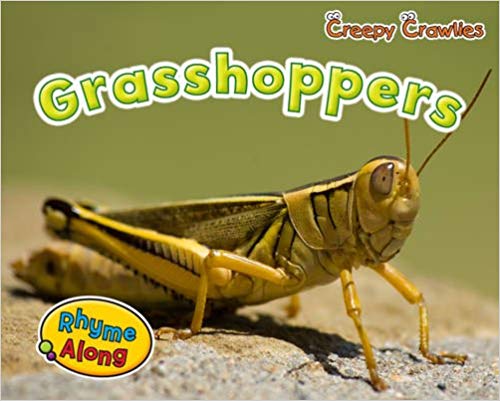-
Salamanders
Lynn M. Stone
Library Binding (Rourke Pub Group, July 1, 1995)Presents information about this amphibian most commonly found in North and South America, describes how it looks, how it lives, and how it relates with people. P
P
-
Bees
Rebecca Rissman
Hardcover (Raintree, July 6, 2012)Do you hear that sound? Buzz! Buzz! It's a bee! Covered in black and yellow fuzz! This book uses simple rhymes and engaging images to teach readers about bees.
-
Creepy Crawlies Pack A of 4
Rebecca Rissman
Hardcover (Raintree, )None I
I
-
Creepy Crawlers
Nikki Bruno Clapper, Gail Saunders-Smith
Hardcover (Capstone Press, Aug. 1, 2015)What has freaky pincers, venomous fangs, twitching antennas, and lots and LOTS of legs? The Creepy Crawlers series! Ten spine-tingling titles will delight bug lovers and inform the rest of us. Big, up-close photos, body diagrams, and fun, informative text show how every creepy feature helps these creatures survive. N
N
-
Spiders
Jack K Patterson
Library Binding (Cavendish Square, Jan. 15, 2019)Having been around for centuries, spiders have gained a reputation for being scary and sneaky. This book uses vivid photographs to show young readers the life of different spiders, such as black widows, daddy longlegs, and tarantulas, including their skills and their survival tactics. The book considers these eight-legged creatures in different regions around the world and across species, helping young readers better understand and appreciate them. L
L
-
Grasshoppers
Anika Abraham
Library Binding (Cavendish Square, Jan. 15, 2019)Using colorful photographs and simple language, this book explores the life of a grasshopper, its traits and survival methods, and its habitat and distribution. Each page educates the reader on a different aspect of a grasshopper's life, its beginnings, food habits, defense mechanisms, and special characteristics, such as its wings and ear placement. This book is sure to engage and excite young readers in a fun and visual way. L
L
-
Flies and Maggots Are Gross!
Leigh Rockwood
Paperback (PowerKids Press, Jan. 1, 2011)Squirming maggots that turn into buzzing, pestering fliesthis unavoidable insect is provokingly explored in this life cycle book. Graphic organizers, fact sheets, and detailed photographs support the text, which will intrigue your budding entomologists.
-
Centipedes
Rebecca Rissman
Paperback (Raintree, July 18, 2013)This book uses simple rhymes and engaging images to teach readers about centipedes. J
J
-
Grasshoppers
Sian Smith
Hardcover (Raintree, )None
-
Wasps
Jack K Patterson
Library Binding (Cavendish Square, Jan. 15, 2019)Wasps might look similar to bees, but they have different features that set them apart. For example, wasps can be bright yellow or bright orange and black, or muted colors. Most wasps also do not sting. This book introduces these differences to young readers and invites them to explore what a wasp is, how wasps live, and incredible traits that make them unique. Presented using engaging photographs and simple text, this book is perfect for the budding reader. L
L

